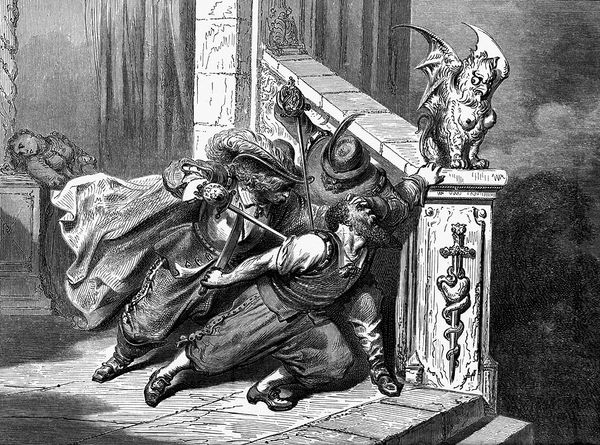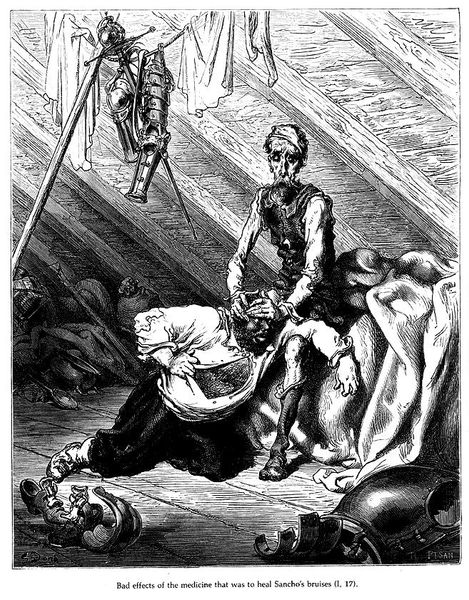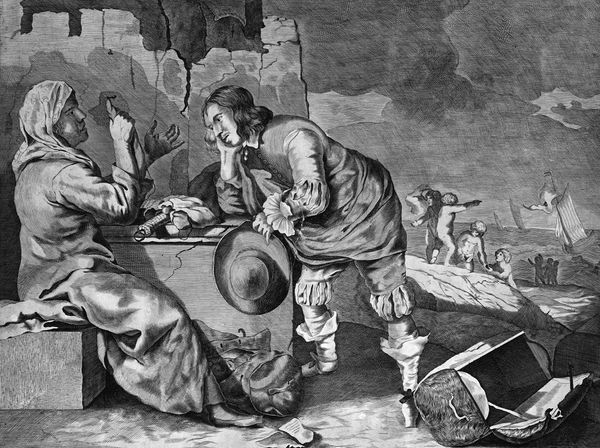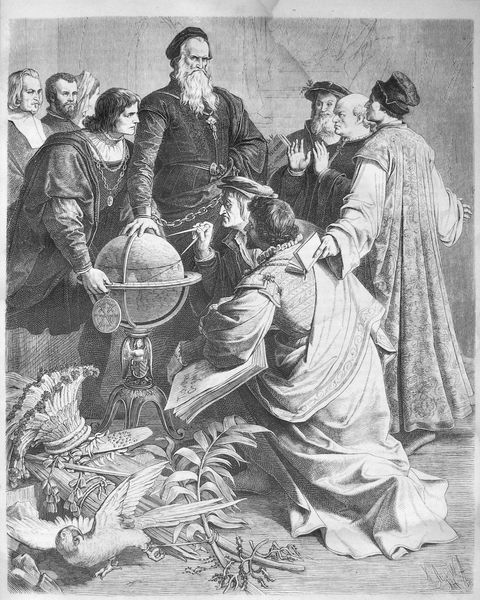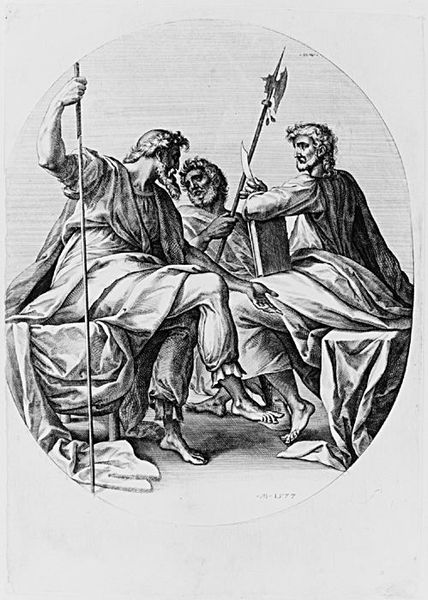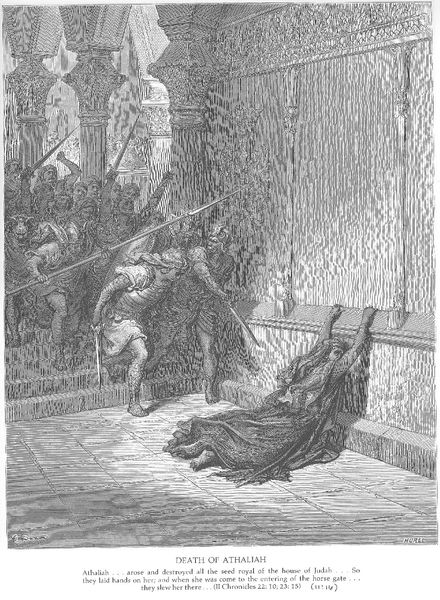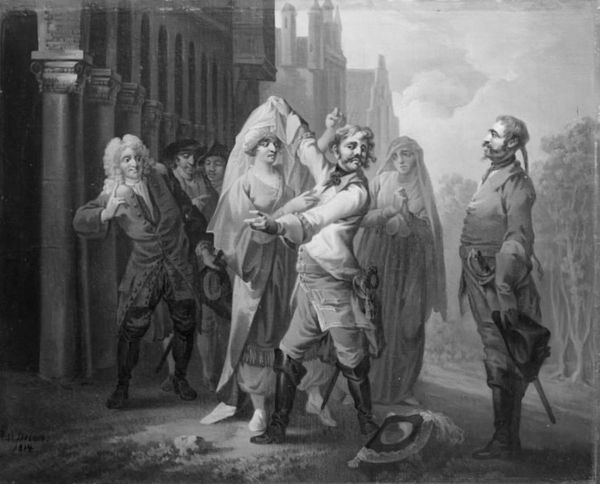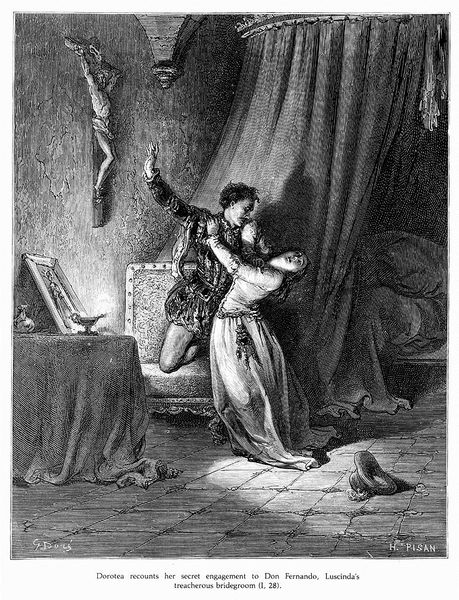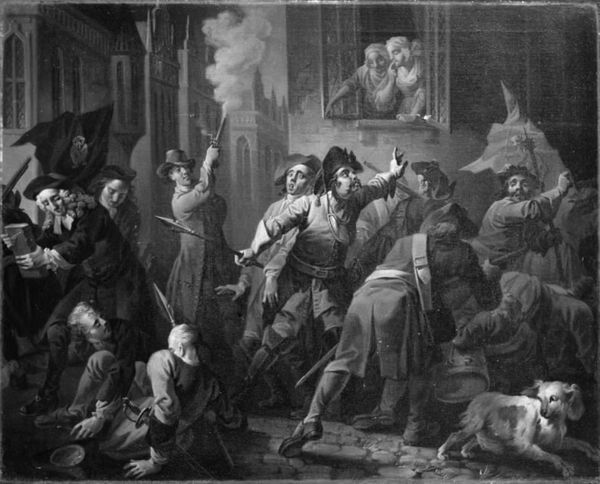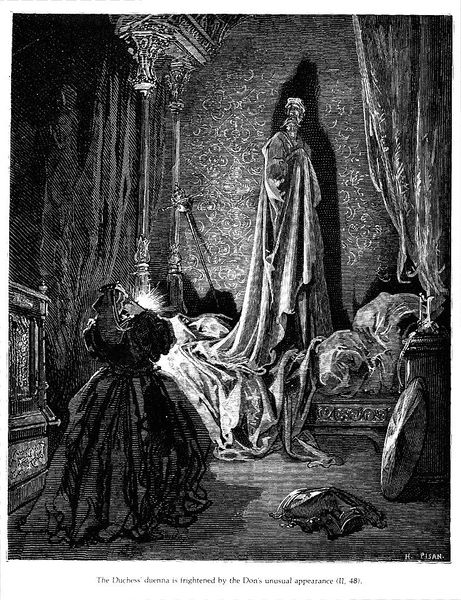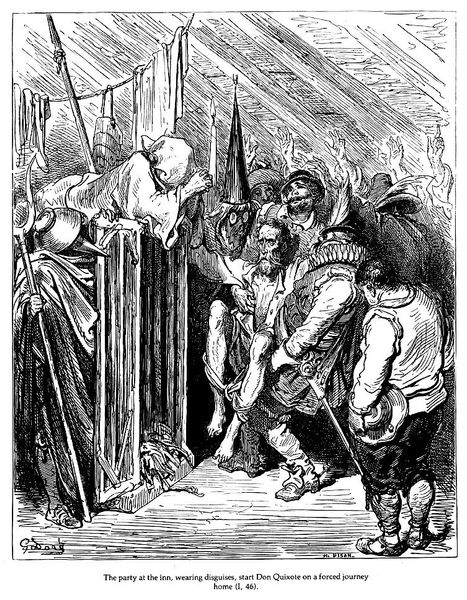
Copyright: Public domain
Wilhelm von Kaulbach created this print, "The Emperor and Death," in Germany during the mid-19th century. The image depicts Napoleon Bonaparte sitting in a lavish room, contemplating a globe. The winged figure of Death, dressed as a soldier, offers him a skull. Kaulbach's print critiques the hubris of military power. Here we see Napoleon's ambition as a form of vanity, blind to the inevitable end that awaits all men. The maps scattered on the floor and the globe, imply a desire for conquest. It is a not so subtle criticism of the emperor's legacy. To fully understand this image, we might research the impact of Napoleon's campaigns on German states, the rise of nationalism, and how the print medium allowed for wide distribution of political commentary. The meaning of art is always contingent on its social and historical context.
Comments
No comments
Be the first to comment and join the conversation on the ultimate creative platform.
